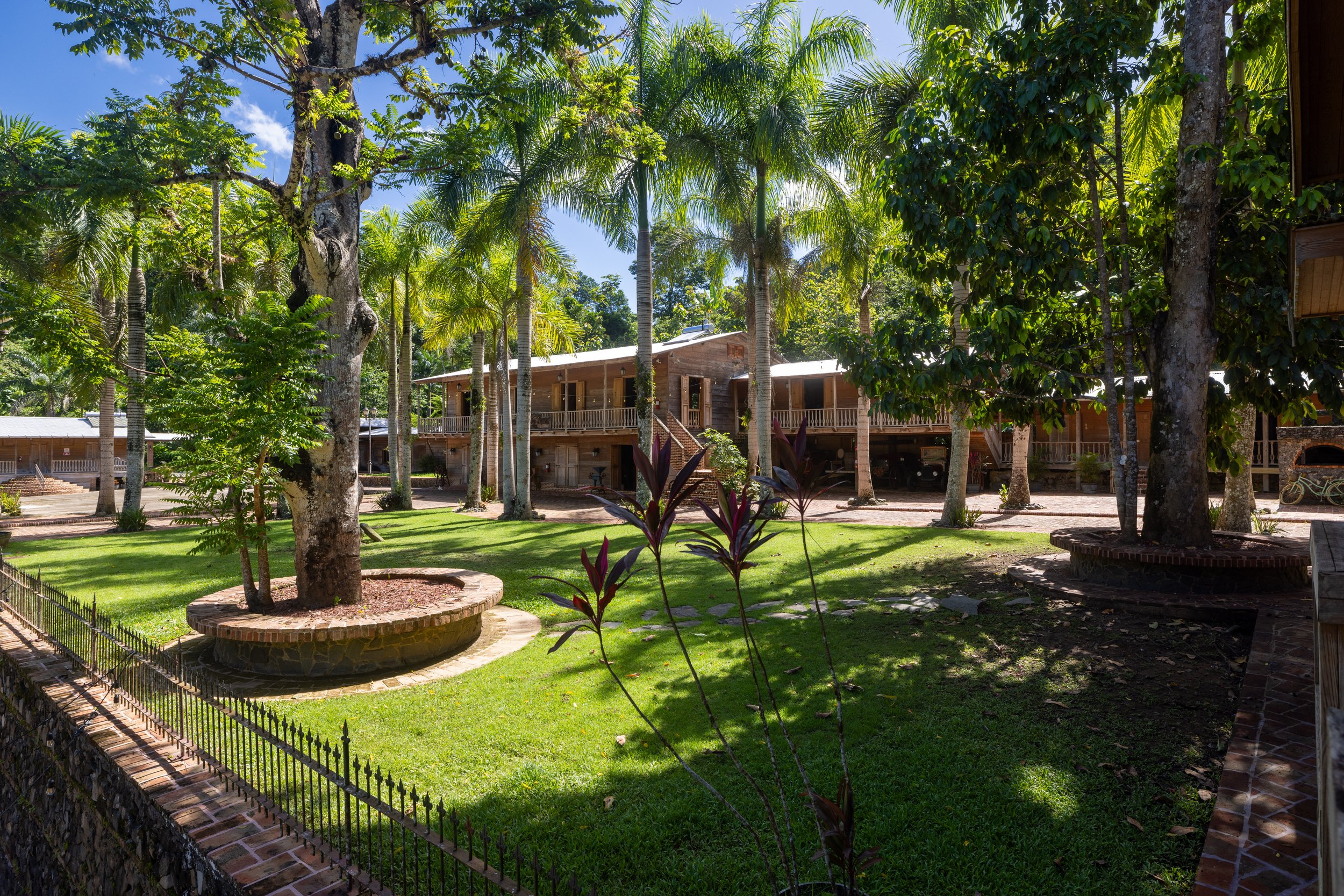
Paraguas/La esperanza/Paraiso/Lealtad - Lares
Originally known as Hacienda Paraguas, was established at Barrio Latorre in Lares sometime between 1828 and 1830 by Frenchman Jean Baptiste "Juan Bautista" Plumey Grau (1797- ) who came to Puerto Rico from Saint Domingue and married San Sebastián born Petronila Irizarry Montalvo. By 1846 the name had been changed to Hacienda La Esperanza and had sixty nine cuerdas planted with coffee trees worked by thirty three slaves.
After Plumey's death, the hacienda was acquired in 1882 by Spanish immigrant from Sóller Miguel Marqués Enseñat (1829-1900) who changed the hacienda's name to Hacienda Paraiso. Miguel was nephew of Juan Marqués (1819- ), one of the first immigrants from Sóller to Puerto Rico in 1837. In 1840 Juan moved to Lares where he established the commercial firm Marqués & Vilella. In 1859, Miguel resided in Lares where he worked at the firm Marqués & Cia. In 1872, Miguel resided in Aguadilla when he established the firm M. Marqués & Cia. to complement and expand the operations of the firm in Lares. He shortly thereafter married Quebradillas born Gertrudis Abrams Hornedo (1846-1895).
The hacienda was inherited by Miguel and Gertrudis' grandaughter Isabel Gertrudis Marqués Campillo (1898-1964) daughter of Attorney Manuel Antonio "Lemuel" Marqués Abrams (1876-1935) and Barcelona born Marial de los Dolores Milagros Camplillo Abrams (1875-1906), daughter of Jaime Campillo and Isabel Abrams. On September 7, 1919 Gertrudis Marqués Campillo married Lares born of Spanish parents from Sóller Bartolomé Suau Soler (1894- ) in Quebradillas. Bartolomé changed the name of the hacienda to its current name, Hacienda Lealtad.
After the Marqués family years of ownership, the hacienda was reportedly owned by José (Pepe) Collazo and in 1978 by Pablo Collazo. Since 2009 its owner has been Edwin Soto Ruiz who has opened a restaurant and boutique hotel on premises and converted the property's manor house into a museum. Today the hacienda has 900 cuerdas and produces the Di Laris, Lealtad, Supremo and Gourmet coffee brands for local consumption and export.
As mentioned in Hacienda Lealtad Wikipedia Page and similar to the system used at Hacienda Vives in Ponce, water was channeled from the nearby Rio Blanco through a canal system about 2,400 feet long to move a water wheel and produce electricity and power to for the coffee production equipment. Water was then returned to its natural cause at Quebrada Platano.
The pictures below were taken by my son Jaime Luis (prphotoadventures.com) in 2023.















